In today’s video/blog we’re going to show you how to train with the ball machine.
If you’re interested in purchasing the lobster then go to ptpgear.com/lobster.
We will make a small commission at no extra cost to you which helps us support our efforts to continue to put out high quality free instruction online.
Thanks for your support!
Before we start, I do want to mention that there are several adjustment knobs on this lobster machine. Each knob will either adjust the spin, speed, height, or interval (which is the timing of each ball feed).
For this first section, I will show you how to practice ground strokes from the baseline. You will see that I have the interval speed set to feed balls every two seconds which may or may not be too fast for you.
I recommend starting with a four second interval between each ball feed when getting started and then make slight adjustments as needed.
Depending on what kind of shot or scenario that you are setting up, the lobster machine gives you many different adjustment knobs, so use and adjust them accordingly.
Forehand Drive
The first thing that I wanted to work on is my forehand drives. I set the ball machine at the middle of the baseline feeding balls towards the middle of the court.
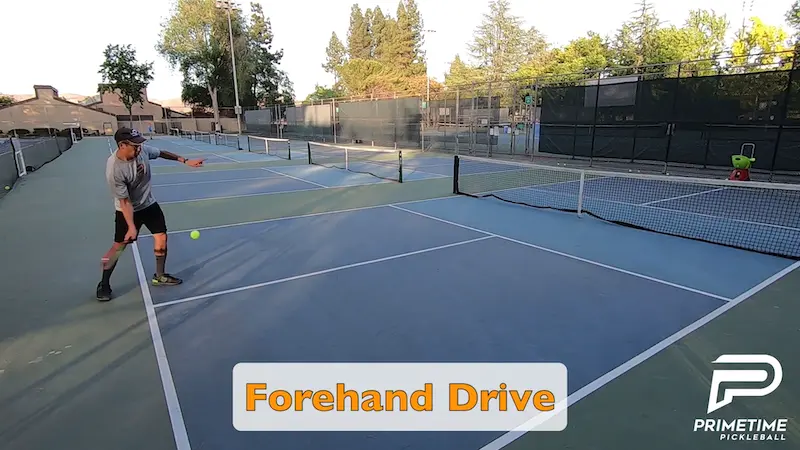
I set the feed interval at two seconds which means that the ball machine feeds the ball every two seconds which makes it a really great cardio workout as well.
What I am trying to focus on here is my footwork and technique as well as doing my best to keep that contact point more out in front.
I’ve actually been trying to work on my forehand lately and I was very pleased with the consistency of the feeds that this machine gave me. The balls that I’m receiving are almost identical which is great and exactly what you need when you are working on a particular shot.
Backhand Drive
Next I moved on to backhand drives to get some practice on my backhand side.
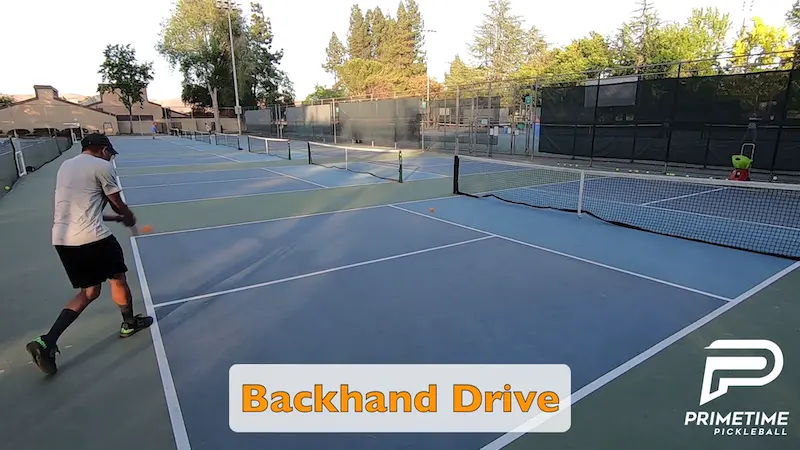
Just like the forehand, the main things that I am focused on here is my footwork and technique.
One thing that I like to mention is that it definitely feels different receiving balls from a machine compared to an actual person.
It really just takes some getting used to. Although because of the consistent feeds this is just a really great and fun way to get in a rhythm on your ground strokes.
Unless you have a partner that can hit you very consistent balls you can find yourself having a hard time practicing your forehand and backhand drives if you have to constantly run to hit the ball which is why having a ball machine like this lobster can be a great way to train.
Forehand Slice
The next thing that I move on to is the forehand slice.
I use this shot when I hit my returns so this is just a really great way to practice that.
Now one of the things that I would change here after watching this back (see video at top of post) is the feed interval. I would probably set it to around four to eight seconds instead of the two second interval that it’s currently at.
This is so that I can start well behind the baseline where I normally return and really step into my slice as if i were headed to the non-volley zone line right after my return.
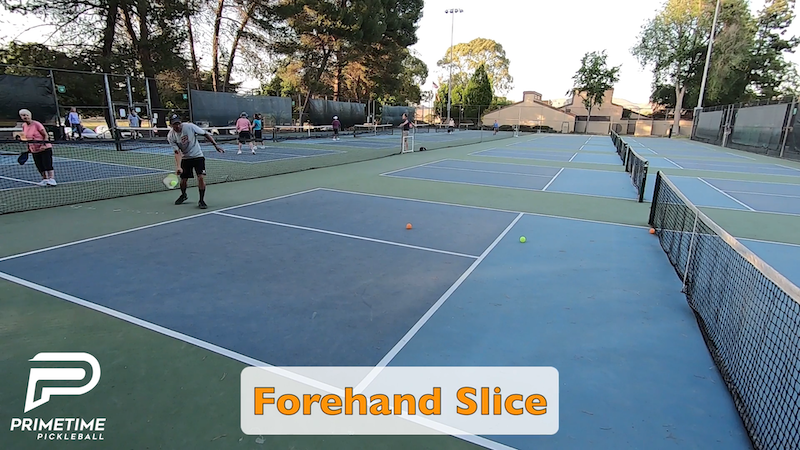
The other thing that I would do is adjust the speed so that the ball was landing much deeper into the court and also adjust the topspin on the feed because most players serve the ball with lots of topspin.
The balls that you see here are just flat balls fed towards the middle of the court. Although, I still think this can be a great way to practice your footwork and technique.
Backhand Slice
I’ll move on to the backhand slice. This is the shot that I hit when I’m returning serves that are hit to my backhand.
I would again make those slight changes on the machine so that I can practice really stepping in and hitting through the ball as I am hitting my backhand slice.
Regardless, this was still very helpful as I am adjusting on each shot trying my best to focus on my footwork and my technique.
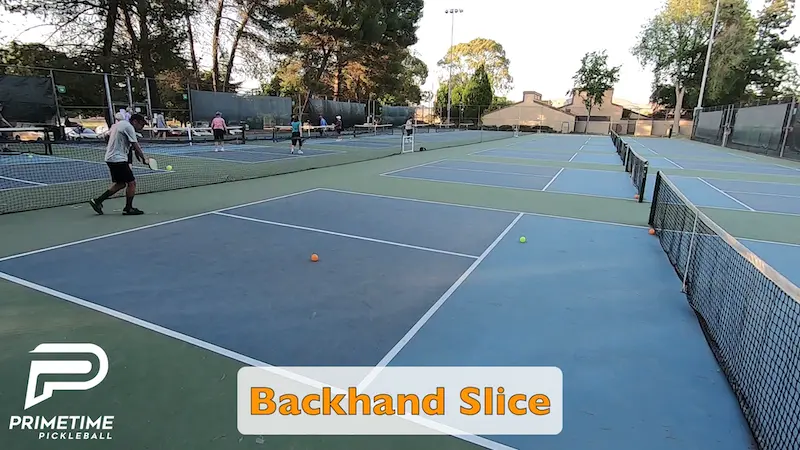
One thing that you’ll see here is that I am alternating hitting shots towards the even side and the odd side.
This is a really great thing to do to train on your target accuracy.
One other thing that you can do is set up some targets using cones or markers so that you have something to actually aim at. Whenever you are training any particular shot it’s important that you always have a target in mind.
Forehand Volley
Next up is the forehand volley. These are high balls intended to practice more of an aggressive volley or put away shot.
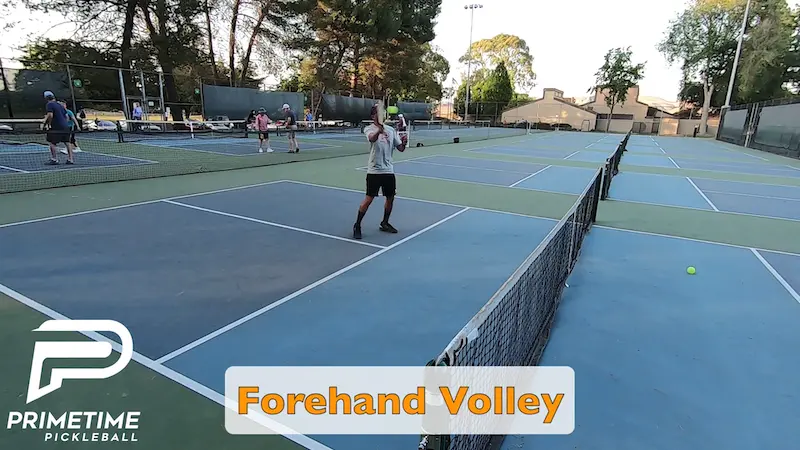
Some of the things that I’m focusing on here is a nice solid contact and keeping my eyes on the ball through contact just like the previous shots.
I am alternating my shots between the even side and the odd side.
Remember this could be another great opportunity to set up some cones or markers to have a physical target to aim at.
Backhand Volley
Next is, you guessed it, the backhand volley.
I found it a lot harder to generate lots of power compared to my forehand side. Now this is pretty typical amongst most players.
Generating the same power on your backhand side as your forehand can be a tall order but one thing that you can keep improving on is your technique and your placement.
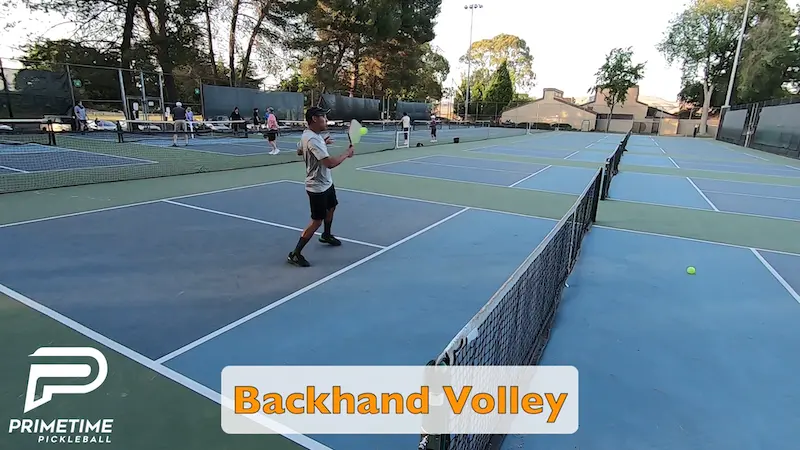
You’ll see me here alternating between targets again on the even side and the odd side as well as hitting my volley short and deep into the court near the baseline.
So, after expanding all that energy hitting those powerful volleys I choose to move on to drop shots and I start on the forehand side.
Forehand Drop Shot
Now here I have the machine feeding the same high ball that I received previously but instead of punishing this ball I am working on my touch as I try to drop this ball short into the non-volley zone.
This is a great shot to use when you have your opponents pinned way back behind the baseline and you have convinced them that you will be hitting the next shot deep into the court.
Backhand Drop Shot
Let’s take a look at the backhand drop shot. Here, I’ve kept the ball feed the same as the previous shot.
Let’s quickly stop right here. Before we move on I do need to mention something super important. Please be aware of any balls that may be rolling around on your side of the court. Stepping or slipping on a ball can cause serious injury. So, for best practice make sure that you stop what you are doing, pick up any balls on your side of the court and hit them over to the other side of the net and then continue with your practice.
I couldn’t stress this enough. Anytime you miss a shot into the net or if a ball gets behind you make sure that you stop your practice, move the ball into a safe place, and then continue.
Throughout this video I did not do a good job of this and I displayed exactly what not to do. So just like you see here, I should have stopped and moved this ball over to the other side of the net.
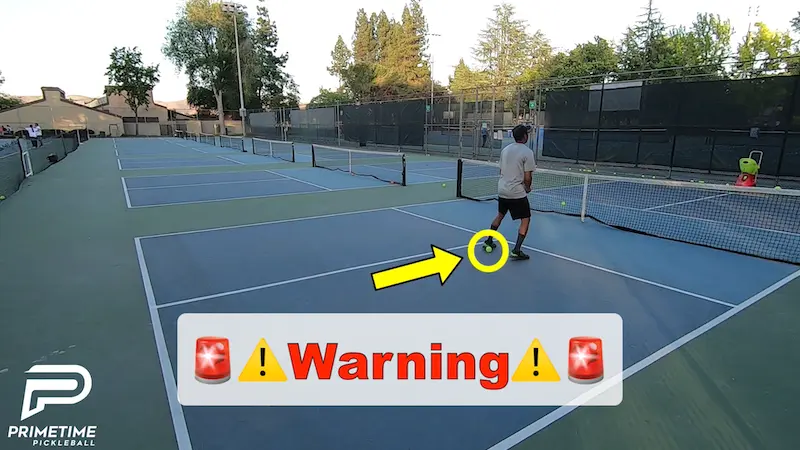
Now that we’ve got all that cleared up let’s jump right back into the video/blog.
Notice again as I practice alternating hitting my drops toward the even side and the odd side. This is a very soft shot as I am trying to take pace off of the incoming ball. You will see that I won’t have any backswing.
Also notice that I am trying to put a little bit of backspin on the ball as well.
As I am contacting the ball, my paddle face is slightly open and I slightly nudge the paddle face downward during contact. This is what creates backspin on the ball.
Forehand Swinging Volley
Now I jump into some swinging volleys.
Here you see me hitting with maximum power and the best way to get maximum power is to hit with a swinging volley.
As I hit my swinging volley you can see me take a large backswing and use all the muscles necessary to give me maximum power in my shot.

Notice as I get ready for the ball my chest and shoulders are facing towards the net. As I take my paddle back you will see them turn towards the sideline then as I strike the ball out in front you will see my chest and shoulders come around as I hit the ball towards my target.
This turning of the shoulders is a key element to gaining maximum power on your swinging volleys.
Backhand Swinging Volley
You will see the same thing here on my backhand side. As I initiate my backswing my chest hips and shoulders will turn towards the sideline and then as I strike the ball they will naturally return forward facing my target.
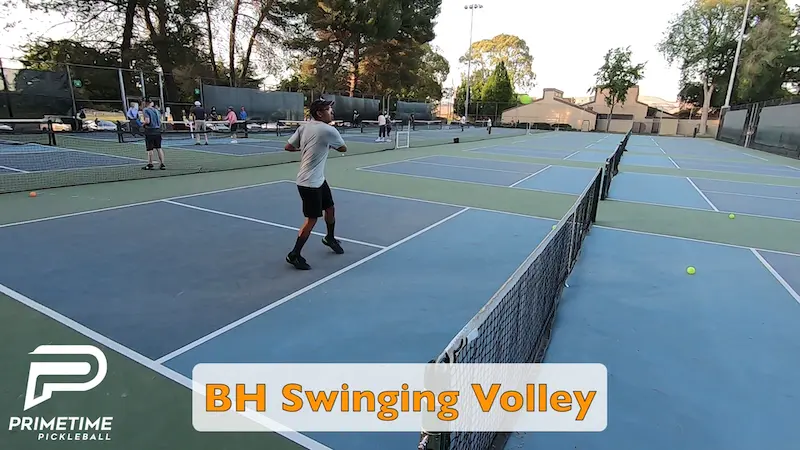
This coiling and uncoiling of my chests hips and shoulders is what generates the power on this shot.
The swinging volley is a very advanced shot so I would suggest to practice on your traditional volleys first then as you get more comfortable with that you can start adding more power using swinging volleys.
Third Shot Drop
Next up is third shot drops.
I have the ball machine here set up to feed balls towards the odd side of the court which is where I want to practice hitting from.
To add to the difficulty of this exercise you can always add specific physical targets to aim at using cones or markers.
Notice here how I start off by hitting backhand under spin drops and halfway through I slide over to practice my forehand topspin drops.
This just goes to show you that you can receive the same ball and play a variety of different shots.
Some key things that I’m focusing on here is my footwork and having a strong and consistent contact point out in front of my body.
Forehand Reset
Next I jump into reset shots.
Here I’m a little past halfway through the transition zone and I am practicing taking all the pace off of the ball as I try to hit each shot into the non-volley zone.
This is a very important skill to have especially in high level play but it’s definitely not easy.
Backhand Reset
Notice how my backswing and follow through are very short and compact and very similar to hitting drop shots from the non-volleys zone line.
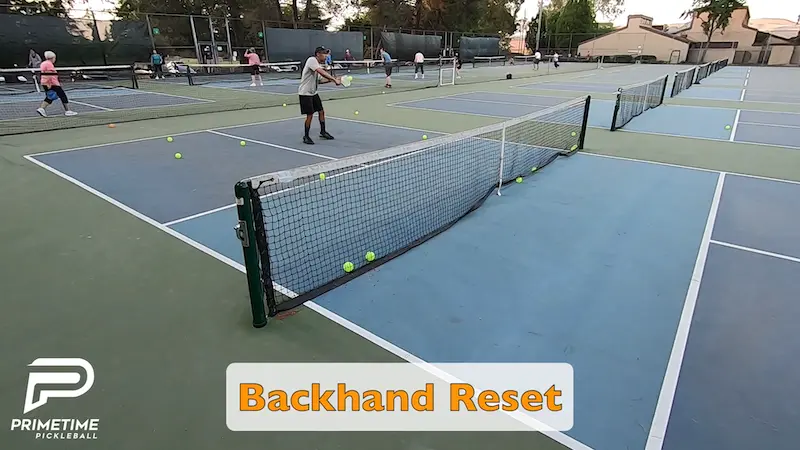
Also, watch as I do a small split step as I get ready for the ball.
These small split steps really help me stay engaged and help me prepare for the ball which prevents me from getting flat-footed.
3 Shot Combo
This next exercise is a fun one which I call the three shot combo.
Here I have the machine feeding towards the odd side of the court.
For the first shot I hit a return, the second shot I hit a reset into the non-volley zone and for the third shot I hit a swinging volley for the put away.
One thing that I do want to mention before we move on is that unlike all the other shots that I’ve shown, for this third shot combo drill you will have to hit a ball or two over to the other side of the court in between each series of shots.
You will see here that after I hit my volley at the net I hit the incoming ball out of the way as I make my way back to the baseline to give myself time to get ready for the next sequence of shots.
You really want to make sure that you don’t have any balls rolling around on your side of the court. So, to avoid any injuries due to stepping or slipping on a ball, make sure that you are keeping all the balls on the other side of the net and then continue with your practice.
There are so many different combinations and scenarios that you can set up with the ball machine and this is just one of them.
Now let’s watch a couple more of these clips and then we’ll move on to the next one. (see video at top of post)
Non-Volley Zone Line Drive
This next one I call the non-volley zone line drive.
First I’ll show you some on the forehand and then we’ll see some on the backhand as well. For this one I had the machine feed me a really high ball that lands in the non-volley zone so that I can work on my drives at the non-volley zone line.
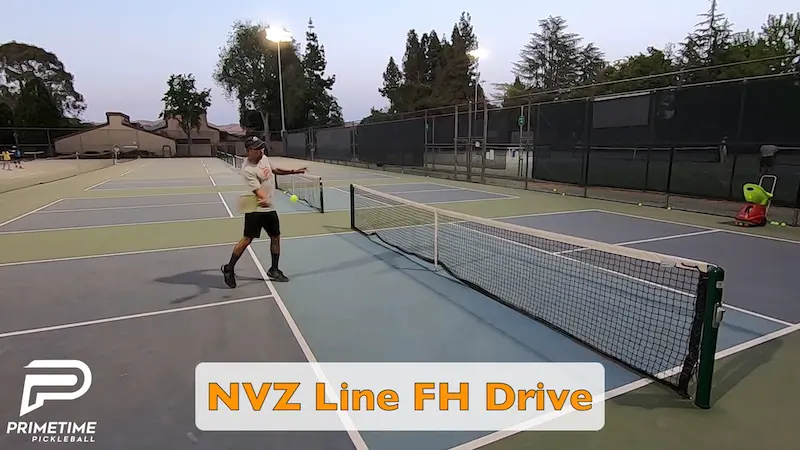
This is a really great way to work on controlling your drive.
The key here is to let the ball come to its peak so that you can strike the ball at a high contact point. Also, notice how important footwork is as well. Even though the ball is coming in high and slow I have to really make sure that I’m in a balanced and strong position to hit the shot.
As I got into a good rhythm of hitting these ground strokes, I really tried to focus on staying relaxed and having a good solid contact point out in front.
Overhead Smash
Last but not least is overheads.
Here I have the machine set up to hit high short balls towards the odd side of the court.
You can see me here hitting a variety of targets. Some angled off the court and some down the middle.
This was an extremely great practice for my overheads and it was really fun to practice hitting extreme angles shot after shot.
You rarely get to practice the shot in a game, so having over 100 balls fed right towards your overhead felt like a dream.
In this exercise I’m really trying to practice and stay relaxed through my swing. Also, it’s really important that you turn your shoulders away from the net and get into a closed stance when hitting this shot.
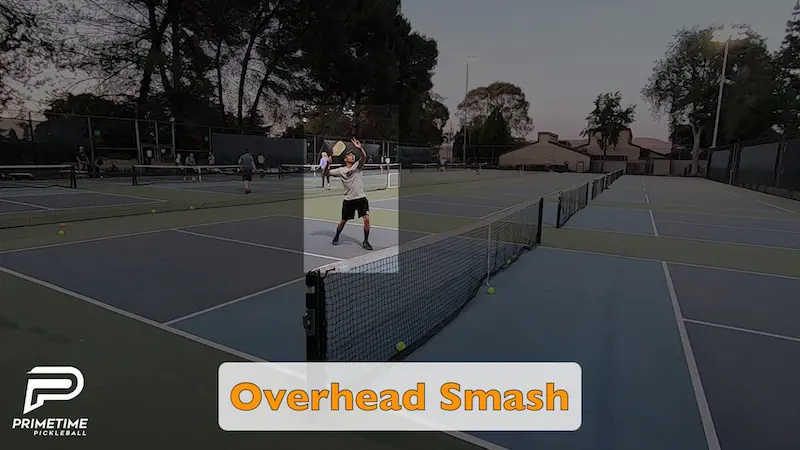
This is a great way to practice proper overhead footwork and to make sure that you are in a closed stance so that you can generate power in a much easier way.
All in all this was a great training session with the lobster.
This whole practice took about an hour and a half and it was definitely time well spent.
One last thing that I do want to mention is that you may have noticed that in this practice I set the ball machine to feed balls towards the middle of the court and sometimes I set it to feed balls towards the odd side of the court.
Depending on what kind of shot you are practicing you will have to adjust the machine to feed balls to a particular area of the court so that you can practice that particular shot.
This lobster machine also has an oscillation feature which I did not use. This means that it will oscillate from left to right, feeding balls to the left, to the right and also towards the middle of the court.
All this to say, make sure that you are practicing all these different shots from different areas of the court, from the even side the odd side and also from the middle of the court.
With a pickleball machine like the lobster you can get the repetitions that you need to improve whatever shot you are working on.
With hard work, determination and maybe even watching a little bit more of PrimeTime Pickleball, we really believe that you can take your game to the next level.
We really appreciate you watching this video. We hope it was helpful.
If you want to purchase this ball machine, the lobster, we have a link below where you can purchase it.
We really appreciate it and we’ll see in the next video.